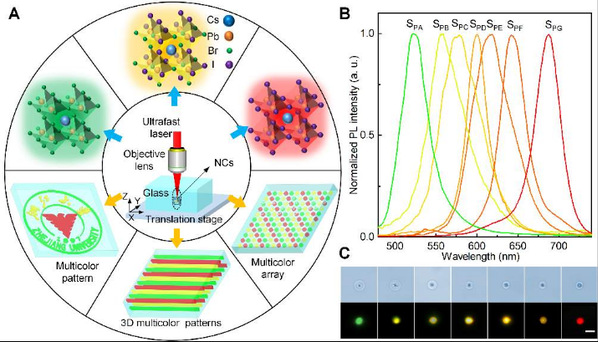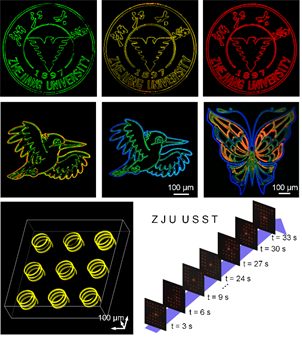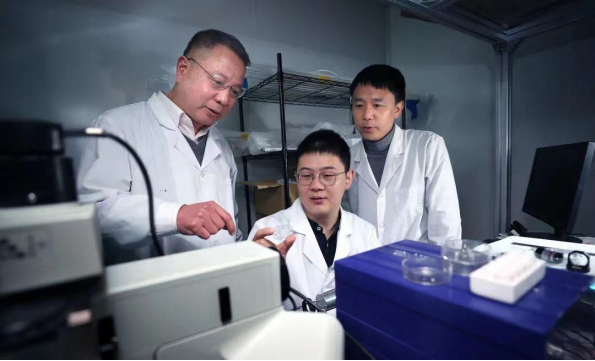ZJU’s scientific achievement crowned as one of China’s top 10 scientific advances of 2022
The Ministry of Science and Technology’s High-Tech Research and Development Center unveiled China’s top 10 scientific advances on March 17. The groundbreaking research on femtosecond laser-induced nanophase separation and ion exchange by Prof. QIU Jianrong’s team at the Zhejiang University College of Optical Science and Engineering was included on the list.

A femtosecond laser is a laser which emits optical pulses in 1-1000 femtoseconds (1 fs = 10−15s). The stable, precise and sharp femtosecond laser thus has extensive applications in various fields, such as myopia surgery. However, to understand the remarkably intricate mechanism for the interactions between femtosecond lasers and matter, researchers should put in strenuous efforts.

Direct lithography of PNC patterns and devices
Prof. QIU Jianrong and his colleagues discovered a new mechanism for the femtosecond laser-induced formation of micro/nano structures in complex systems. Take, for example, the oxide glass system containing chloride, bromide and iodide ions. The researchers conducted ultra-fast three-dimensional lithography on composition-tunable perovskite nanocrystals which could display a full spectrum of colors, including red, orange, yellow, green and blue, inside glass. The nanocrystals exhibited remarkable stability even when subjected to UV irradiation, soaked in organic solutions, or exposed to a high temperature of 250°C. Moreover, this three-dimensional micro/nano structure could be displayed in a dynamic, stereoscopic, polychromous and holographic manner at the 1080p level. This study reveals the laws of femtosecond laser-induced spatially selective mesoscopic-scale phase separation and ion exchange and opens up new vistas for femtosecond laser-induced three-dimensional manufacturing.

Prof. QIU Jianrong (left)and his colleagues in the lab
Prof. QIU Jianrong’s team has long engaged in research into femtosecond laser-laser interactions and has made a string of breakthroughs. For example, they have discovered new phenomena and mechanisms, such as variations in femtosecond laser-induced refractions, polarization-dependent nano-grating, and periodic nanopores along the laser propagation direction. They have also pioneered in new technologies, including the spatially selective manipulation of ion valence states, the direct writing of three-dimensional optical waveguides, and the precipitation and erasure of functional nanocrystals. Some of their findings have been applied in integrated optical circuits and optical communications.
Related reading:
Scientists craft a new world with an ultra-fast laser “burin”